Civic Lab Online: What is the Digital Divide?
Posted on March 1, 2021 at 6:00 am
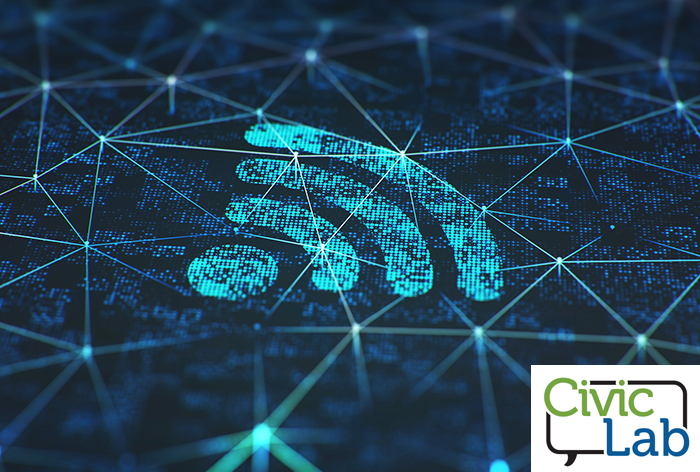
About Civic Lab Online
Civic Lab Online provides information on issues facing our community for you to explore. Take a look at thought-provoking materials for teens and adults that allow us to engage in open conversation and grow together as a community. You’ll find all past topics on the Civic Lab Online web page.
What is the Digital Divide?
Our nation and our world have changed significantly in the past 30 years. Has access (or lack of access) to the internet made the divide between rich and poor, educated and uneducated, empowered and disadvantaged even worse?
Fast Facts

What is a digital divide?
The difference between those who have access to services and information online via high speed, reliable internet and those who do not is referred to as the digital divide.
Those who can easily use an internet-enabled device to search for the answer to a question, attend a meeting online, gain health information or make a purchase online are information rich. Those without a device, using slow internet service, or lacking the skills for using internet service or devices are information poor. Note: though the information poor may be intelligent and resourceful and find other ways to access information outside of internet service, certain services and information will not be accessible to them at all.
There are several types of digital divide. The global digital divide is evaluated on whether most citizens have access to reliable, uncensored internet country to country. The World Bank collects yearly statistics on internet usage by country. Many factors can affect this:
Politics can affect the digital divide. Some countries have governments that censor certain websites, including Saudi Arabia, North Korea, and China.
Language can affect the digital divide. As of 2015, 80% of all internet content is in only 10 of the globe’s 7117 languages. More than half of this content is only in English. It may be very difficult to find needed information translated into a language you understand, even if you’re multilingual.
Gender roles can affect the digital divide. In some countries, women’s and men’s roles are very separate in society, and women have less access to internet. The number of women with internet access has increased in recent years. In 2019, 48% of women in middle- and low-income countries had mobile internet, which is 313 million fewer women than men. The gender gap is significant in many countries. For example, in South Asia, women are 28% less likely than men to own a mobile phone and 57% less likely to have mobile internet.
The term digital divide may also refer to unequal access to internet across the United States. This occurs for a number of reasons.
According to the U.S. Census, 18% of households had internet access in 1997. By 2015, that number had increased to 73%. Daily work and school routines increasingly rely on high speed internet access year to year, and Covid-19 brought a sharp 25% increase to internet use at home after stay at home orders were issued by President Trump in 2020.
Geographic density can affect the digital divide. Some schools and households in sparsely populated areas have access to only dial-up internet via a telephone line. The process for internet companies to dig trenches in the ground to lay Digital Subscriber Lines (DSL) or fiber optic cable in order to make faster broadband internet available is expensive. If there are very few people in a geographic area to offset the cost of laying the cable, internet companies may decide not to offer service. Between 19% to 25% of the U.S. does not have broadband internet. In some areas, an entire generation of teens have never seen internet except dial-up, something unimaginable to their high-speed internet peers.
Poverty can affect the digital divide. In areas where geography allows access to high-speed internet access, poverty may not. Of households earning less than $20,000 per year, half did not have broadband, even if they lived in a city where service was readily available. In both urban and rural areas, subscriptions lowered consistently in households earning less than $50,000. A survey in the summer of 2020 revealed 57% of college students said that finding a fast reliable internet connection would be a challenge if they were required to continue online classes. More than 70% of college students said they had to foot the bill for what they needed to attend online classes, including laptops, headphones, internet service and printers. For about two-thirds of them that cost was significant. A 2018 survey found that 1 in 5 teenagers cannot complete their homework at home due to lack of internet, and which teenagers are affected largely reflects race and class.
Disabilities and lack of adaptive technology can affect the digital divide. Assistive technology to provide text to speech capabilities, closed captioning and other features that help the disabled access information on the web are expensive, but that’s not the only barrier. The Americans with Disabilities Act (ADA) requires government websites to be accessible to computer programs like text to speech, but other websites may not be coded in such a way that they will work with the software, resulting in garbled nonsense that can be frustrating.
Digital literacy can affect the digital divide. Some Americans lack the digital literacy to be familiar and comfortable using the internet. The American Library Association’s Digital Literacy Task Force defines digital literacy as “the ability to use information and communication technologies to find, evaluate, create, and communicate information, requiring both cognitive and technical skills.”
Who is working on these problems? Why can’t we fix it?
Libraries have been a consistent resource for those frustrated by the digital divide, providing technology help and free internet access to the public. An amendment to the Telecommunications Act of 1996 allows libraries to purchase internet services at a discounted rate, especially in rural areas. Libraries show high rates of computer use across all community types, as patrons use free printing, access uninterrupted work space, and get digital literacy help.
One challenge in implementing broadband is that the “home utility” model that brought the nation electricity and phone service may not work. Electricity is always more or less the same, but models for providing internet have changed from dial-up to DSL to broadband. If legislation passes funding broadband for all homes in the U.S., some questions people have include “What happens when tech changes?” and “Who pays for the upgrades?”
Because a nationwide utility model may not be feasible, subsidies attempting to bring internet to low-connectivity areas are frequent. In 2020, the Federal Communications Committee (FCC) allocated $20.4 billion to the Rural Digital Opportunity Fund, which pays cable and internet providers to bring high-speed internet to rural areas. The Universal Service Fund, formerly to bring telephone service to rural and high-cost areas, now does the same for internet, allocating billions of dollars into four main funds each year, all concerned with closing the digital divide.
Some city governments and school districts have opted for self-provisioning, or setting up their own server for access via the cloud, rather than relying on services offered by internet companies. However, 22 states now have laws or restrictions against municipal broadband (broadband owned by a public entity). For example, Washington state allows cities to provide some services but bars utilities from providing broadband directly. Instead, utilities can sell or lease broadband structure wholesale in accordance with strict restrictions. In 2018, Washington lawmakers passed legislation aimed at expanding access to broadband for residents by enabling ports throughout the state to enter into public-private partnerships with private telecom companies. However, amendments to the bill restricted such partnerships to just one telecom provider, ensuring a monopoly wouldn’t exist. In 2019, legislation stalled that would enable municipal governments to provide broadband services to residents and limit such projects to areas where no other ISPs are currently operating.
Many policies get caught up in a hotly contested issue: net neutrality. Net neutrality is a set of rules that prohibit internet service providers from discriminating against or preferencing certain content by providing it to consumers at different speeds or by charging content producers (Netflix, for example) for the right to deliver their product to consumers. Proponents of net neutrality argue that this would increase competition, freedom of information, and innovation. Opponents argue that net neutrality decreases competition, increases costs, and provides no incentive for internet providers to update.
Read, Watch, Listen
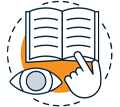
READ
Browne, Carol Ann and Smith, Brad. Tools and Weapons: The Promise and the Peril of the Digital Age. inventors and the relentless pursuit of clean energy. Penguin Random House, 2019.
Microsoft President Brad Smith explains how the world has turned information technology into both a powerful tool and a formidable weapon. If companies that create technology don’t accept responsibility for the future as technology progresses and governments don’t regulate technology and keep pace with innovation, what ethical dilemmas and power struggles will emerge between nations?
Rafalow, Matthew H. Digital Divisions: How Schools Create Inequality in the Tech Era. University of Chicago Press, 2020.
Google social scientist Matthew H. Rafalow explores the expectations that are put on students’ technical skills according to their race and class. Through case studies at middle schools serving variously affluent, middle-income, and low-income students, Rafalow explores how schools produce users of digital technology. He finds that, in their interactions with peers, students at all three schools use digital technology in sophisticated and creative ways. However, only the teachers in the school serving (mostly white) affluent students help translate the skills students develop through their digital play into educational capital. Rafalo argues that closing the digital divide is about much more than access: it’s about attitudes.
Smibert, Angie. The Digital Divide: 12 Things You Need to Know. 12 Story Library, 2016.
In this nonfiction children’s book, Smibert lays out the basic types of digital divides, how they came to exist, and what the barriers are for closing the digital divide.
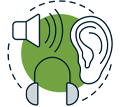
WATCH
Without A Net: The Digital Divide in America. Dir. Rorey Kennedy. Moxie Firecracker Films, distributed by National Geographic Channel, 26 September 2017.
Educators discuss the increase in jobs that require use of technology and what they need to prepare their students. The obstacles include getting computers students can use all day instead of once a week, training teachers on how to effectively use technology in their classroom, and implementing expensive systems in rural areas, and all stand in the way of student learning.
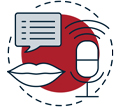
LISTEN
“Dr. Nicol Turner Lee on the ‘digitally invisible’.” The Divide, Light Reading, 11 February 2021. https://www.lightreading.com/opticalip/fttx/podcast—divide-dr-nicol-turner-lee-on-digitally-invisible/v/d-id/767278
Researcher Dr. Nicol Turner Lee discusses her 10-city tour investigating the digital divide in the U.S. She discusses the research for her forthcoming book, Digitally Invisible: How the Internet is Creating the New Underclass, including the services that cannot be accessed without technology, such as Uber and food delivery, what is and isn’t working when it comes to telecommunications policy, and best practices learned from public-private partnerships to get people connected during the pandemic.
Digital Resources
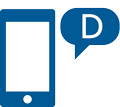
Opposing Viewpoints in Context
Access this resource at www.scld.org/opposing-viewpoints to learn more about the digital divide.
Print & Other Materials in Our Catalog
Search our catalog for books, large print, eBooks, and audiobooks at www.scld.org/catalog.
Downloadable Documents
Fast Facts: What is the Digital Divide?
Read, Watch, Listen: What is the Digital Divide?
Tags: adults, civic lab, community, digital divide, digital gap, digital inequality, Discussion, technology, teens
